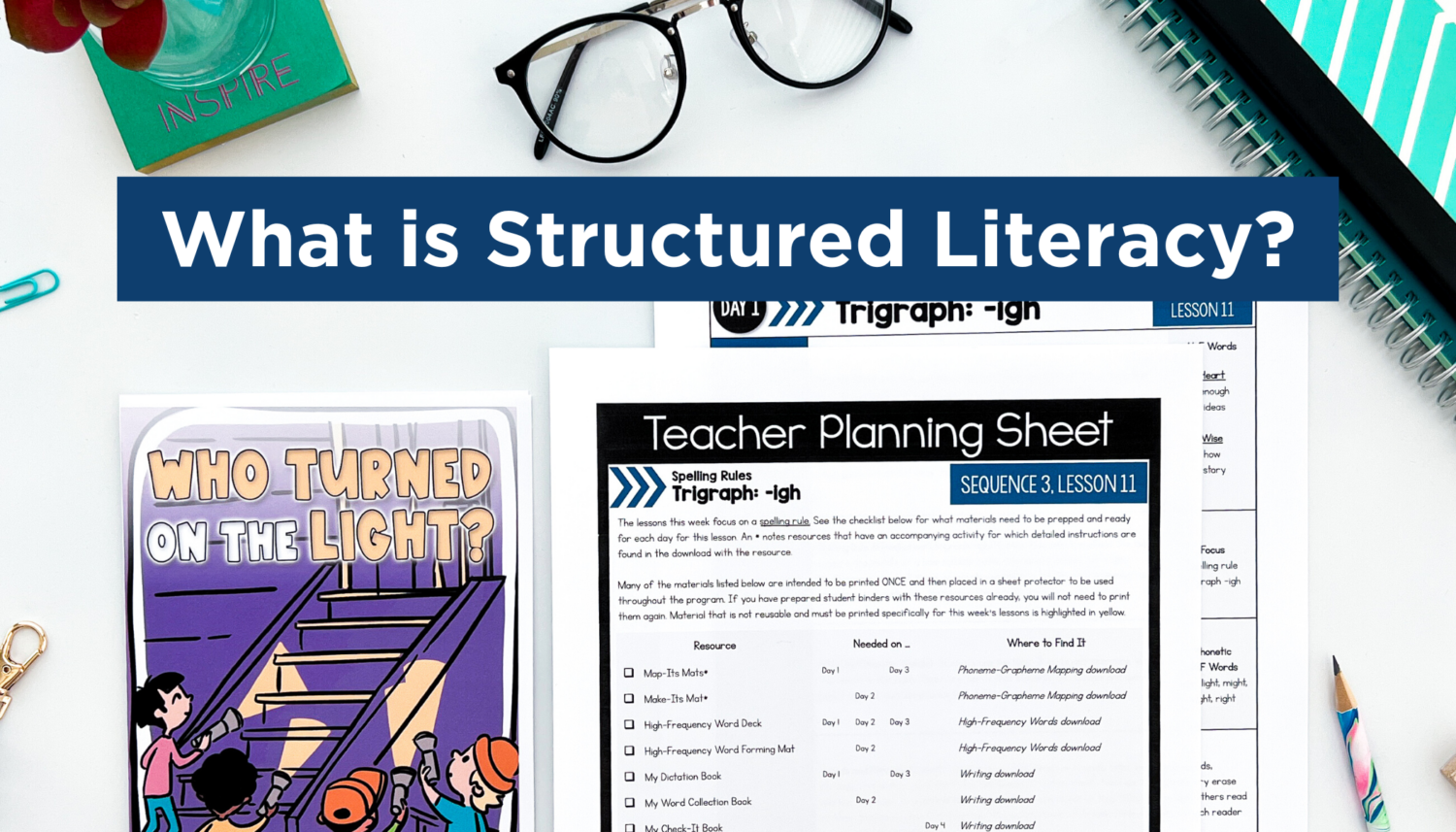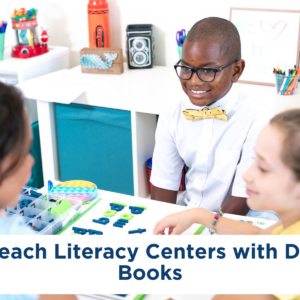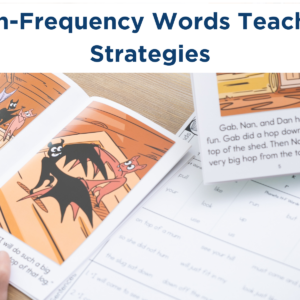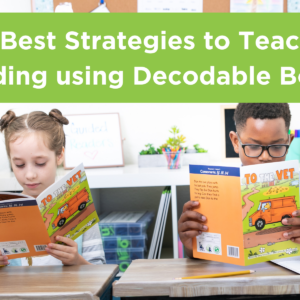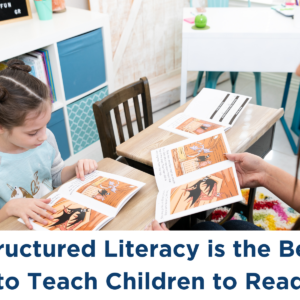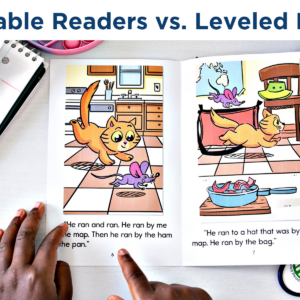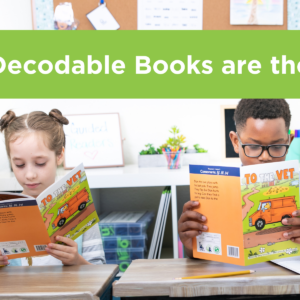If you are following the ever-increasing buzz around the science of reading, you have likely come across the term ‘Structured Literacy’. What is Structured Literacy? How is it connected to the Science of Reading? How does Structured Literacy differ from the equally well-known Balanced Literacy approach? In this post, we will answer these questions and more!
What is Structured Literacy?
In the simplest of terms, Structured Literacy is reading and writing instruction delivered in a structured way. Often, you will hear Structured Literacy instruction referred to as explicit, systematic or sequential, and diagnostic. Let’s explore these concepts a little more:
- Explicit instruction refers to how the instruction is delivered to students. Explicit teaching is teacher-led. Teachers provide direct instruction to students about a specific concept. Explicit teaching also refers to the clarity of instruction. The content shared with students is clear, targeted, and specific.
- Systematic or sequential instruction refers to the purposeful order of the content within a lesson or across a series of lessons. The sequence in which concepts are introduced is purposeful and prepares students for increasingly complex instruction over time.
- Diagnostic refers to assessing each student’s specific literacy needs and designing individualized, responsive, and targeted instruction for each student.
If you were to spend time in a Structured Literacy classroom, you would likely notice explicit, direct instruction with frequent opportunities for students to engage with multiple aspects of reading as noted in Scarborough’s Rope (Scarborough 2001)

Daily instruction would include phonological awareness, phonics, decoding, fluency, comprehension, and more. The instructional content for each component of reading would follow a specific scope and sequence and also becomes increasingly complex over time as students master prerequisite skills. Structured Literacy is often multi-sensory, so you would probably notice students engaging in a variety of different activities. There is also likely to be a consistent element of assessment to identify specific instructional needs and an ongoing cumulative review of previously taught concepts.
What is not Structured Literacy?
At times, you may hear Structured Literacy referred to as too drill-oriented, not engaging for students, or inauthentic. You may also hear Structured Literacy referred to synonymously with the Science of Reading or confused with Balanced Literacy. Gaining clarity on Structured Literacy is an important step to implementation, so let’s explore these ideas a little further!
Structured Literacy programs often use predictable instructional routines to allow students repeated practice with important skills. The predictable, repeated nature of these routines may appear like drills to adults, but to students, this approach provides a safe cognitive space to focus on and practice literacy skills. These routines also help ensure students develop the foundational prerequisite skills needed to grapple with more complex literacy skills over time. Structured Literacy is purposefully designed to provide students with the explicit, systematic, and diagnostic instruction they need to become proficient readers!
The term “structured” may seem to imply a lack of engagement, joy, and excitement, but we think you will find Structured Literacy is engaging for students! Structured Literacy typically prioritizes the strategic use of instructional minutes, so the pacing of instruction keeps students engaged. Another way Structured Literacy may keep students engaged is through multi-sensory instruction. Teachers often use interactive ‘games’, manipulatives, and active response strategies to maintain a high level of participation across the day. The resources used in Structured Literacy lessons can also be highly engaging. Our own Guided Readers Structured Literacy program features high-interest texts, interactive whole and small group lessons, and colorful, kid-friendly instructional resources.
Some critics of Structured Literacy believe other approaches may provide more authentic reading experiences for students. One common criticism centers around Structured Literacy’s use of decodable texts. Decodable readers are books specifically designed to support developing readers as they become fluent decoders. The words in a decodable text follow a specific phonics pattern to help students practice decoding words with that pattern. From an adult’s perspective, decodable texts likely appear to lack rich vocabulary, opportunities for critical thinking, and meaning. From an early reader perspective, decodable texts provide an opportunity to specifically practice decoding, develop early reading skills, and build reading efficacy. Structured Literacy prioritizes strategically building foundational reading skills so students are more prepared to read increasingly complex literature as they get older.
The Science of Reading and Structured Literacy
The Science of Reading often abbreviated to SOR or SoR, is a large body of research that seeks to explain the complex process of how humans learn to read. Scientists, psychologists, neurologists, educators, and other professionals conducted decades-long research across the globe to develop a deep, comprehensive understanding of what conditions, skills, and knowledge are necessary to become a reader.
The Science of Reading is not a specific curriculum or single set of instructional practices, rather it is the crucial information that informs our curriculum and instruction. The information found in SOR research is the bedrock of the Structured Literacy approach. While Structured Literacy is also not a single, specific curriculum, it is the instructional approach that best applies the ideas found in the research referred to as the Science of Reading. In other words: Structured Literacy is the how, the Science of Reading is the why.
Guided Readers and other Structured Literacy programs are often described as “aligned to the Science of Reading”. This means the information and concepts found in the SOR research were used to design and develop the curriculum. When selecting a curriculum or other instructional resources, we encourage you to look into how well the program truly aligns with the Science of Reading research. This will help ensure the instructional resources you use are the best ones for your students. Guided Readers invites you to check out the research behind our program and the evidence of its success!
Balanced Literacy and Structured Literacy
Balanced Literacy is an instructional approach that seeks to strike a balance between a whole language and phonics approach. Often, Balanced Literacy teachers employ a workshop model where teacher-led instruction is delivered in a short window of time and students are tasked with independent application of the skill or strategy. Instruction in a Balanced Literacy framework usually contains elements of the National Reading Panel’s Big Five: Phonemic Awareness, Phonics, Fluency, Vocabulary, and Comprehension (NRP 2000). If you were to visit a Balanced Literacy classroom, you would likely notice guided reading groups, leveled texts, and ample independent reading and/or writing time. You might notice students engaging in word work centers, listening to stories read aloud, and conferring 1:1 with a teacher.
While some elements of Balanced Literacy are certainly beneficial for students, the Science of Reading research does not align with most of this approach. Experts cite concerns about the lack of explicit and direct teaching, the use of instructional time vs. independent application time, outdated assessment practices, instructional materials like leveled readers, and inconsistent interpretation of what true “balance” in literacy looks like.
Where Can I Learn More?
We will continue exploring Structured Literacy in future posts so please stay tuned. In the meantime, check out our previous blog posts to learn more about literacy instruction, the Science of Reading, and how Guided Readers can help guide your students through learning the code to reading for meaning!
National Reading Panel (U.S.) and National Institute of Child Health and Human Development (U.S.). Report of the National Reading Panel: Teaching Children to Read : An Evidence-based Assessment of the Scientific Research Literature on Reading and Its Implications for Reading Instruction. U.S. Dept. of Health and Human Services, Public Health Service, National Institutes of Health, National Institute of Child Health and Human Development, 2000.
Scarborough, H. S. (2001). Connecting early language and literacy to later reading (dis)abilities: Evidence, theory, and practice. In S. Neuman & D. Dickinson (Eds.), Handbook for research in early literacy (pp. 97–110). New York, NY: Guilford Press.

